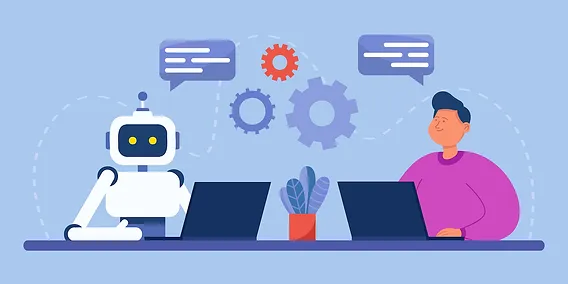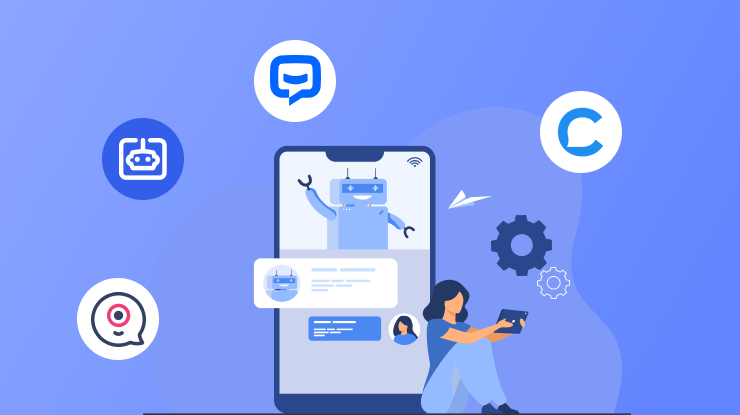
In the competitive world of e-commerce, having an FAQ chatbot can significantly improve customer service and enhance the shopping experience. Here’s a step-by-step guide on how to build one:
1. Define the Scope of Your FAQ Chatbot
- Identify Key Topics:
- Determine the main areas that customers usually ask questions about. For an e-commerce store, these might include product information (such as features, sizes, colors), shipping policies (delivery time, shipping costs), return and refund procedures, and payment methods.
- Make a list of specific sub-topics under each main area. For example, under product information, you could have details about the materials used in products or how to care for them.
- Understand Customer Queries:
- Analyze past customer support tickets, emails, and live chat transcripts to find out the most common questions. If many customers have asked about how to track their orders, that should definitely be included in the chatbot’s knowledge base.
- Anticipate other questions that might arise based on your product offerings and business operations. For instance, if you sell electronics, customers might ask about warranty details.
2. Gather and Prepare the Data
- Collect Existing Information:
- Look for internal documents like product manuals, company policies, and service agreements. These can provide a wealth of information for answering customer questions. For example, your shipping policy document can be used to create responses about delivery times to different regions.
- Gather answers from your customer support team’s previous interactions. They’ve likely already crafted good responses to many common questions.
- Organize and Format the Data:
- Categorize the questions and answers based on the topics you identified earlier. For example, put all shipping-related questions in one category and product-related ones in another.
- Keep the language simple and easy to understand. Avoid using technical jargon unless your customers are familiar with it. Write clear, concise answers that directly address the question.
3. Choose the Right Chatbot Platform and Tools
- Select a Chatbot Framework:
- Dialogflow is a popular choice as it’s user-friendly and has good integration capabilities with e-commerce platforms. It allows you to create intents (which represent different types of questions) and train the chatbot easily.
- Rasa is another option that gives you more control over the development process. It’s great if you want to customize the chatbot’s behavior and handle more complex conversations.

- Use Natural Language Processing (NLP) Tools:
- Many chatbot platforms come with built-in NLP features. These help the chatbot understand variations in how customers phrase their questions. For example, it can recognize that “When will my order arrive?” and “How long does shipping take?” mean similar things.
- You can also use external NLP libraries like NLTK (Natural Language Toolkit) if you need to add extra functionality or fine-tune the language understanding aspect.
4. Build and Train the Chatbot
- Create Intents and Entities:
- Intents are the goals behind the customer’s questions. For example, an intent could be “Check shipping time”. Define the different intents based on your categorized questions.
- Entities are specific pieces of information within a question. In the question “Is the red shirt available in size medium?”, “red shirt” and “size medium” are entities. Identify and label these entities to help the chatbot extract relevant details.
- Train the Chatbot:
- Use the prepared questions and answers to train the chatbot. Feed it examples of different ways customers might ask about a particular topic. For instance, for the shipping time intent, provide multiple phrasings like “How long till my package gets here?” and “When can I expect delivery?”.
- Monitor the training process and check the accuracy of the chatbot’s responses. Make adjustments if it’s not understanding certain questions correctly.
5. Test and Deploy the Chatbot
- Conduct Internal Testing:
- Have your team members interact with the chatbot as if they were customers. They can test various scenarios and see if the responses are accurate, helpful, and make sense.
- Look for any glitches in the conversation flow, like the chatbot getting confused or providing incorrect answers. Fix these issues before deploying it to the public.
- Deploy to Your E-Commerce Store:
- Once you’re satisfied with the testing results, integrate the chatbot with your website or mobile app. Place it in a visible and accessible location, like on the customer support page or in a pop-up window.
- Continuously monitor its performance in the real world. Analyze customer interactions and feedback to make further improvements over time.

In conclusion, building an FAQ chatbot for your e-commerce store takes careful planning, data preparation, and continuous testing. By following these steps, you can create a chatbot that effectively assists your customers and improves their overall shopping experience.





